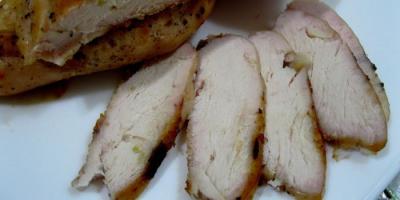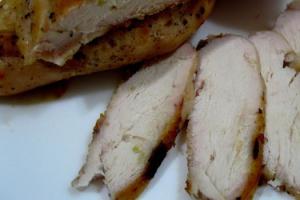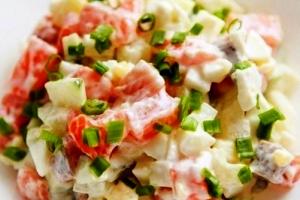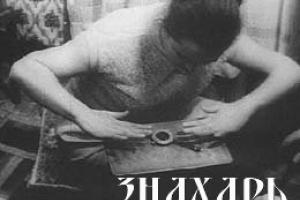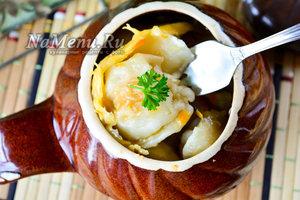Now it has become popular to grow on your own personal plot evergreen trees. They not only decorate the yard both in summer and winter, but also create a certain coziness in the garden area. The main point when caring for juniper is its preparation for wintering. If you follow some recommendations, the shrub will successfully overwinter and in the spring it will have a rich green color, and not a yellow-brown tint.
Features of caring for juniper in the fall and in preparation for winter - general tips and recommendations
Juniper is not distinguished by its capricious disposition. But if certain rules are not followed, the beautiful plant may wither away, it will cease to have a decorative appearance and turn into a wild tree.

- Watering– the shrub practically does not require watering. If it is a hot end of summer, gradually turning into a velvety autumn, then irrigation with water should be carried out no more than once every 2 weeks. In case of rainy and cool summer, additional watering not required.
- Spraying- the only moment that juniper favors. The event is best held before the first morning hours or after sunset. This is necessary so that the bright rays do not burn the delicate branches.
- Fertilizers– fertilizing is applied mainly in the spring. But if the bush lags behind in growth or does not add young shoots at all, you need to add mineral fertilizers in the form of nitroammophoska. But no more than once every 4 weeks.
- Trimming– if the juniper was planted specifically in decorative purposes and its crown is constantly being formed, then in autumn period Be sure to carry out formative pruning. In addition, regardless of whether the figure is formed from a bush or the juniper grows with a natural crown, the removal of excess branches is mandatory. All dry, broken or damaged branches are cut off.
- Shelter for the winter– in most cases, additional shelter is not required; juniper tolerates even strong drops well temperature regime. The only way to prevent the bush from breaking off its branches is to bend them to the trunk and tie them with twine.

Attention! Juniper requires virtually no special care. The main thing is to follow general condition bush. If the plant is withering and looks unhealthy, you need to look for the cause in improper care, including in preparation for winter.
Pruning juniper in autumn
The first pruning can be done only 2-3 years after planting in open ground. This period will allow the young plant to grow stronger and gain weight. After this time, it will be possible to begin to form the crown according to the intended image.
Video: pruning Cossack juniper in autumn or spring
When to prune juniper - in autumn or spring
Juniper can be pruned both in the spring months and before the first winter temperature drops. In autumn, it is recommended to remove excess juniper growth no earlier than September-October. But you shouldn’t wait until the first frost.
Important! The minimum temperature for pruning juniper in autumn is +4 C.
Lower air temperatures adversely affect the healing of fresh cuts - they do not linger and are an excellent option for overwintering pests and diseases.
Timing for pruning juniper in autumn and spring
Spring pruning is carried out in early to mid-April, and autumn pruning of juniper - in September, until the end of October.
How to prune juniper in the fall
The event only needs to be held clean, sharpened and disinfected instruments.
The bush adds no more than 10 cm per year. Therefore, it is necessary to cut off no more than 15-20% of the mass that has grown over the past period.
Need to do pruning only with protective gloves. Juniper poisonous, when cut, it releases juice that can burn the skin of your hands.

Pruning should be carried out according to the rules - less is better than more. If the pruning has led to the thoughtless removal of growth buds, then the shrub can stop its growth completely.
- You need to trim so that the slope is 45 degrees per bud.
- If you cut lower than required, the wound on the tree will take a long time to heal. This will provoke improper growth of the bud - it can either give a small increase or die completely (dry out).
- If the shoot looks up, then it is cut so that the end bud is the one that looks away from the center of the plant (outer bud). In the case of a drooping branch, pruning is done, on the contrary, to the inner bud.
- When removing branches, you should leave a small stump - no more than 2 cm. It will block the upper bud from dying tissue, giving it the opportunity to begin to grow.
Feeding and fertilizing juniper after autumn pruning
Important! After pruning juniper in the fall, it is necessary to monitor its condition. It is recommended to apply special mineral fertilizers. Stimulants-adaptogens are best suited to boost immunity. They activate the growth of the root system and strengthen the tree as a whole.
High-quality pruning will create not only beautiful decorative decoration garden, but also a healthy plant with high immunity and no pests.
Video: how to prune juniper topiary in autumn or spring
How to preserve juniper in winter: features and methods of preservation
Juniper is quite frost-resistant; it does not need to be covered for the winter. But if the bush is specially formed, then under the layer of snow the formed figures can fall apart - the branches spread out, break off under the mass of the white blanket.

Note! Young animals under 3 years of age are also subject to shelter. It is not recommended to wrap it up excessively. It’s better to pile a snowdrift of spruce branches on top.
Some plant species may have increased sensitivity to temperature changes in spring periods. Warm weather and a sharp drop in air temperatures negatively affect color shade plants.
When exposed to cold air, the color of juniper branches becomes brown with a yellow tint. This indicates the death of the branch, which accordingly affects the loss decorative form given over a long period.

For these purposes, cover the bush in the last days of autumn. To cover juniper for the winter, the following methods are used:
- Snow- most The best way shelters. When the snow begins to fall, the structure tied with ropes must be covered with a snowdrift. The latter should be crumbly; under no circumstances should the branches and trunk be damaged.
- Pine needles– if the plant is miniature, it can be completely covered with piled spruce branches. If the tree is large, the spruce branches are tied to the branches.
- Burlap or non-woven material(agrofibre)– the material is wrapped around the entire crown so that the bottom of the tree remains open. You can’t wrap it in film - all the branches will be blocked, and the bush may get sick.
- Screen in use– it is installed on the side where there is the most sunlight. Reflecting from it, the rays will warm the crown.
Young cuttings are closed in exactly this way or, if possible, brought into greenhouse conditions. In regions where sub-zero temperatures drop to -30 0 C or more, juniper needs to be insulated with the densest material in two layers, first the pots, and then the upper part of the crown.
Video: preparing and covering juniper in winter
What are the features of preparing juniper for winter in different regions?
In the Volga region, junipers often suffer from sunburn. They are not as afraid of the frost in this region as the bright sun in the first days of spring. For this purpose, the plant must be covered at the end of autumn.
For wrapping, use any material that can be found at hand: old burlap, cotton fabric, tulle, insect netting. The selected material is attached to the branches of the tree, wrapping it in a circle. You shouldn’t squeeze it tightly; you want the plant to breathe. A rope should be wound on top so that the shelter does not fly off.
By the way! Large trees are somewhat more difficult to cover. But this must be done at least on the side where there is the most sunlight. Otherwise, you may lose a separate section of the crown.
In the Moscow region, as well as in Siberia and the Urals juniper overwinters well. Before the strong sub-zero temperatures you need to tie all the branches together with a rope. If this is not done, you may lose some of the branches due to the heavy gravity under the snowdrifts.
A large amount of snow falls in these regions, and as you know, white peril is the best covering material. If the shrub is small, then it can be buried under a large snowdrift, throwing a specially large volume over the plant.
In spring, the natural covering material will melt on its own, and the roots will absorb all the moisture after a long winter.
Thus, in winter it is worth covering the juniper if the seedlings are still very small. In addition, it is recommended to use shelter in regions with little snowfall and piercing winds.
Typical mistakes in caring for juniper in the fall and in preparation for winter
Important! Growing juniper requires a lot of effort, but even more patience and control over the condition of the plant is required so as not to make mistakes in caring for it in the fall and in preparation for winter.
Gardeners are constantly adding to the list of errors. If you try to prevent these incidents, the plant will grow healthy and strong:
- Incorrect, excessive watering of juniper– frequent irrigation of the plant leads to waterlogging of the soil. This process affects the health of the root system, it begins to rot, which negatively affects the entire tree.
- Applying nitrogen fertilizer in late autumn– fertilizing should be done no later than the end of September. This is necessary so that all the nutrients are absorbed by the root system, but do not have time to be distributed throughout the tree before retiring. Otherwise, fertilizing with nitrogen provokes increased growth of young growth, which leads to freezing of part of the crown of the bush.
- Incorrect pruning leads to stopping the growth and development of the tree.
- Covering juniper for the winter with polyethylene– if you decide to cover it, it is better with burlap or a thick layer of paper. Oilcloth promotes the formation of condensation inside the space, which provokes high humidity and the acquisition of a fungal disease.
- In no case You can’t feed juniper with chicken droppings or mullein. Such fertilizer will have a negative effect on the plant, predetermining its death.
- Cuts should not be covered with garden varnish., the cuts should tighten on their own.

To obtain beautiful tree juniper plant, you should follow simple rules for caring for it in the fall and in preparation for winter. Otherwise, the plant may turn into a wild bush.
In contact with
We planted junipers, they took root, now we need to learn how to preserve and increase their beauty. Care so that the needles remain thick and fluffy, do not fade from the sun, maintaining a rich green or blue color, and the crown pleases the eye with its perfect shape.
How to fertilize and moisturize juniper
Junipers do not need frequent and abundant fertilizing, especially with organic matter. Young plants are fertilized once a year, in April-May, with Kemira-universal (15-20 g per bucket of water) or nitroammophoska. It is scattered in a circle near the trunk (but not near the trunk!) at the rate of 30-40 g per 1 m2 and the soil is watered abundantly. Adult plants can generally do without fertilizing. They also do not need frequent watering; even in hot summers, only two or three are enough, with a consumption of 10-30 liters of water per plant.But spraying or sprinkling is very useful for all junipers and at any age: many of them do not tolerate dry air well. Moisture washes the needles, which helps clean the stomata - breathing holes. It is advisable to spray weekly, in the evening or on a cloudy day. You will immediately notice the result - after man-made rain, the needles begin to smell fragrant.
Preparing juniper for winter
Most junipers tolerate our winters well, and their frost resistance increases with age. Only heat-loving ones need to be covered for the winter. European varieties, young plants in the first year after planting and those that are weakened after a dry summer. In the first half of November trunk circle should be sprinkled with a layer of 10-12 cm of peat and covered with spruce branches. In early spring, the cover is removed and the peat is raked away from the trunk to prevent rotting of the root collar.We have already mentioned that the crown of pillar junipers can be damaged during heavy snowfalls. Therefore, you need to regularly shake off snow from them, and also better in autumn tie tightly with a wide ribbon, in a spiral from bottom to top. But the most dangerous thing for the decorative appearance of junipers is sunburn. When the bright sun begins to warm up, the stomata of the needles open, the plant begins to breathe and evaporate the moisture present in the cells. At the same time, the roots in the frozen ground are not yet working, the plant cannot replenish its moisture reserves, and dehydration begins.
Ultraviolet rays deliver an additional blow. Reflecting from the surface of the snow, they fall on the underside of the needles. As a result, the needles turn brown and dry out, which is often discovered only in May, when nothing can be done. You need to protect yourself from this trouble in the fall: water the plant well, saturating the soil with moisture, and at the beginning of winter, wrap the crown with non-woven material.
Formation of juniper, cutting
Nature has given junipers a beautiful crown, so there is no need to cut them. An exception is made for those plants that have decided to be shaped in some special way. For example, in spreading and creeping junipers cut out branches if you want to make them compact or restrain growth. Basically, pruning involves removing diseased, broken, old or dried branches.Only plants in a trimmed hedge are pruned 2-3 times per season, removing side branches: the first time - at the end of April, the second - in mid-summer, the last - as necessary, for example, if the green wall loses its shape.
Protecting juniper from diseases and pests
Rust brings the most trouble to junipers. The disease is signaled by the appearance of swellings with yellowish gelatinous or mucous secretions of fungi. Diseased branches are removed, and the bush is sprayed with a solution of the drug Abiga-Pik (50 g per 10 l of water), 4 times with an interval of 10 days.Of the pests, they are especially annoying different types aphids. Fitoverm is used against it (20 g per 10 liters of water): double treatment with an interval of 10-14 days. Double spraying with Decis pro (0.5 g per 10 liters of water) is effective against juniper leaf miner moths, after 10-14 days. WITH spider mite fight using the drug fufanon (15 ml per 10 liters of water). It is also used to treat a bush that has been badly damaged by the sawfly. You can find out about the appearance of this pest by discovering that the branches have become fragile and hollow inside.
Unfortunately, Cossack juniper is a carrier of rust, so it should not be planted close to fruit trees and berry bushes.Thanks to its features coniferous trees loved by many summer residents. Thanks to the fact that these plants all year round remain green, the garden looks elegant in any season, and the variety of crown shapes allows you to create original landscape compositions on your site.
Caring for coniferous plants is not difficult; special care Only rare, isolated varieties need it. Therefore, covering conifers for the winter should be done only in isolated cases. You will learn on this page how to place conifers on the site and how to insulate conifers for the winter.
Even just conifers in the garden are already a guarantee of the beauty of the site. The very appearance of these plants, their leaves-needles and crown shapes provide a special, “universal” image that can be combined with any shapes and lines, any color scheme and various style directions.
However, the most valuable thing about conifers in garden design is that they are plants easy care and add beauty to the site in any season of the year. They make the garden all-season. Not every plant can boast of a combination of all these qualities at once. The design of a garden with coniferous plants looks especially original, because all conifers are different, and among them there are stunningly spectacular specimens. Most conifers can be safely planted in your garden, and with minimal care they will delight you all year round.
It is necessary to place coniferous plants so as to emphasize the planning lines of the site.
You need to place them in places where the appearance and shape of your conifers will emphasize the shape of the relief, the shape of structures and structures in the landscape, the configuration of paths and other landscape objects.


It is good to place them at the entrance to the house and to the site.


Look at the photo: conifers in the garden will look good next to stairs and retaining walls.


You can place them at forks and bends of paths and along the perimeter of the site.


Just like trees and shrubs, they will be beautiful next to gazebos and next to recreation areas.


A great place for coniferous plants is on lawns as “soloists” and in garden modules.


The design solution is the location within the “coniferous gardens”.
A good place for conifers is in the “dark” corners of the site (with insufficient lighting or “inconvenient” for development).
One conifer can be placed in the center of the front area of the site, from the entrance to the house. A passage (path) must be organized to this place. This will be a conifer “for the New Year”.

Conifers are especially good as hedges.
Crown shape of conifers (pine, larch, spruce, etc.)
Below is a table that describes the crown shapes of coniferous plants, including the crown shape of spruce, the crown shape of larch, the crown shape of pine, juniper, yew, microbiota and cypress.
Table “Crown shape of coniferous plants”:
|
Coniferous plants |
Characteristic |
| Norway spruce | Pyramidal crown, height up to 30 m, there are many forms of spruce, they have different heights, shapes and crown shades |
| Blue spruce | Narrow pyramidal crown, height up to 20m, there are various forms |
| Nesting spruce | One of the forms of common spruce, prostrate and drooping crown, height up to 1.5 m, diameter up to 3 m |
| El Konika | Narrow-conical crown, dense, height up to 2 m |
| Scots pine | Oval-conical crown, height 20-30 m, needles with a bluish tint |
| Black pine | Spreading crown, height up to 40 m, dark green needles |
| Weymouth Pine | Columnar crown, branches start low to the ground, up to 40 m tall, soft, bluish-green needles, 5 needles in a bunch |
| Mountain pine | Fan-shaped crown, there are also shrubby multi-stemmed forms, height no more than 4 m |
| Thuja occidentalis | Pyramidal crown, height up to 12m, there are many forms of different heights, crown types and different shades needle colors: bluish, variegated, golden |
| Thuja globulus | One of the forms of thuja occidentalis, spherical crown, height up to 2.5 m |
| Common juniper | Conical crown, height up to 5 m. There is a large number various forms in appearance very different from the original |
| Red cedar | Retracted, silently egg-shaped crown, height up to 30 m, bluish-green needles, there are many forms |
| Juniper horizontal | Prostrate crown, height up to 0.5 m, diameter up to 1.6 m, silver-blue needles |
| Juniper Cossack | Semi-prostrate crown, unlike horizontal juniper, branches are directed slightly upward, height up to 1.5 m, diameter up to 3 m |
| Cypress pea | Pyramidal crown, height up to 30 m Creates a “southern” flavor; other forms are unstable in our climate. Requires shade |
| Larch | Cone-shaped crown, height up to 40 m |
| Yew berry | Ovoid-cylindrical crown, height up to 5 m, diameter up to 5 m |
| Cross-paired microbiota | Prostrate crown, height up to 1 m, diameter up to 2 m, does not tolerate replanting, adult plants cannot be replanted |
When choosing conifers for your garden, first of all you need to pay attention to the appearance, height, shape of the crown, type and shade of the needles. You can see what kind of crown different conifers have in the table.
Caring for coniferous plants: fertilizing, watering, pruning
Conifers require the least care of all garden plants.Feeding coniferous plants. Be sure to feed the first time in early spring, on melted snow, with a special fertilizer for coniferous plants. If your site has poor soil, you can repeat this procedure in June.
Watering coniferous plants. During the season you don’t have to water; usually coniferous plants have enough rain. However, if there is extreme heat and drought in the summer, water 2-3 times.
Pruning coniferous plants. It is necessary to prune when there is severe thickening, if this affects the appearance of the plants. You need to trim if you want to shape your conifers specifically, for “designer” purposes. You can prune to encourage branching so that your conifers become more “fluffy.”
Preparing conifers for winter: how to cover conifers
No conifers are afraid of frost. But some of them, especially “varietal” conifers, are afraid of strong sun and drying wind. They do not freeze out, but dry out, “burn out.” After this, they recover for a long time, and in some cases die completely. Preparing conifers for winter is easier than preparing deciduous trees or shrubs. Before covering your conifers for the winter, sew regular covers from spunbond or lutrasil in the form of bags with ties at the bottom. Sew the covers by first measuring the height and width of the plants. But you can’t just put the covers on: under the weight of the snow on the covers, the tops of the conifers can bend or even break. Therefore, first, before the ground freezes, drive a high block next to each plant (slightly higher than the plant itself), and only then can you put on the cover. The timber will prevent the cover from touching the top of the tree.
For low spherical conifers, you need to use cucumber arches placed crosswise over the conifer.
How to prepare and insulate conifers for the winter
Before preparing conifers for winter, sew covers for thujas, cypresses, all types of junipers, for Konika spruce and all miniature conifers. Ordinary and pine trees do not need shelter, but only 3 years after planting. So all newly planted coniferous plants, regardless of the type, will have to be covered for 3 years. Remove all shelters when the snow has completely melted. But everything happens during the winter. The shelter can be blown away by the wind. The shelter may be too thin for a particular place (sunny); a sunny place and a small amount of land under the conifer may coincide, for example, it is planted in a garden module. One way or another, the ephedra can burn. If approximately 80-100 percent of the crown is burnt (it is yellow-orange), then no coniferous plant is restored. It will need to be replaced. If approximately 50-80 percent of the crown is burnt, juniper and konika spruce will not recover; they will recover in a year, black pine - in 2 years. If less than 50 percent of the crown is burned, the juniper will recover in a year, the Konika spruce will partially recover in 2 years, and the pine and thuja will recover by autumn.
Features of the life of coniferous plants in the garden
In rare cases, conifers may not take root; perhaps you have not fulfilled any of the four requirements given below:
1. Conifers depend on the cardinal directions. This must be taken into account when purchasing and planting. When purchasing from a nursery, pay attention to how the ephedra grows, where its north side is. Tie a ribbon there. This also applies to plants in containers. They are unlikely to be constantly turned, especially large specimens. When you brought the conifer to your garden, orient it correctly and turn the seedling to the cardinal points. When planting, you need to position the plant so that the northern side of the seedling (the side with the ribbon) coincides with the northern direction on your site.
2. One of the features of the life of coniferous plants in the garden is that their roots love oxygen. Therefore, when planting, you need to dig up the soil 2-3 times to saturate it with oxygen.
3. Autumn is not suitable for planting conifers.
4. Conifers are afraid of such a natural phenomenon as “ice rain.” So shelter won't hurt anyway.
23.11.2017What and how to cover coniferous plants in winter?
In the pre-winter time, prepare coniferous trees and shrubs. To avoid breaks from the snow pile, the branches of vertically growing junipers and thujas are carefully tied together. An ordinary twine is suitable for this.

Kraft paper, burlap, and non-woven materials such as agrospan, lutrasil, and spunbond can be used as covering materials. At home, you can even use newspaper and wrapping paper for shading. The only condition is that the material must “breathe”, so films and plastic are unsuitable.
The snow around the plant is trampled or cleared. Now wrap the material around it, completely covering the needles. Fasten the seams with a stapler, leave a gap at the top for breathing (on the shadow side, so that Sun rays did not fall on the needles). There are also frame method shelters - a frame is installed around the plant and covered with a cap made of agrospan. The shelter and cap are secured with pegs. You can see the types of frame shelters on our website.
In some frosty and sunny winters, adult, long-planted plants can be shaded with a fine mesh on the sunny side.
When is the cover removed?
Removing the cover requires great care and compliance with several conditions. Firstly, it is necessary that the ground thaws no less than the depth of a bayonet and the root system of the plant begins to work. This happens around the end of April.
Secondly, the cover is removed in cloudy weather so that sudden changes in illumination and direct rays do not cause shock to the needles. It is ideal if you have studied the weather forecast in advance and opened the plants ahead of a cloudy period of 4-7 days. Then your coniferous pets will be able to gradually adapt to the light regime and painlessly move from hibernation to growth.
Watch our video on covering thujas, conifers and fruit trees.
Lovers of coniferous plantations living in middle lane In Russia, they dream of evergreen decoration of their home plot. Despite the frost resistance of conifers, young seedlings need protection for the winter period. How we cover conifers for the winter and other methods of protection from ice and snow will be discussed in this article.
Why cover winter-hardy crops?
Almost all coniferous plantings, from trees to low-growing shrubs, are distinguished by their unpretentiousness and resistance to frost. Both thuja and spruce attract the attention of gardeners not only because of their beauty appearance, but also resistant to diseases and pests, and also exude a wonderful pine aroma. In addition, they are excellent antiseptics.

For the love of decorative appearance plants, it is planted along alleys, near administrative buildings, as well as in parks and gardens. But, despite such positive characteristics, coniferous plants need shelter for the winter. Namely, young seedlings that are not yet 3-4 years old are considered weak and need protection. Here are two aspects that adversely affect evergreen crops:
- strong frosty wind;
- spring sun rays reflected from the snow.
Why exactly the wind and sunlight? The fact is that the winter wind causes severe dryness of the branches, and from a lack of moisture they freeze, break off and die. If you have observed a beautiful spruce with a withered shoot and yellowed needles, then know that this was due to a cold and strong wind. While tree needles can withstand severe frost, they do not like the wind.

Everyone knows that the thaw at the end of February and March is characterized by the bright sun, the rays of which are reflected on the white snow. At this time, sap flow has not yet begun, and the bushes are still weak and vulnerable. Then the pine needles and green thuja paws under bright light can get sunburned. Therefore, there is a need to cover the crop for the winter, not to mention the branches breaking under the weight of the adhering snow.
Protection for medium-height shrubs
To cover coniferous bushes that have not yet reached 3 years of age for the winter, we first bend the branches to the trunk of the tree. To do this, take a string, preferably green or the color of the trunk, and, without pressing too much, lightly wrap it with a cord so that the legs of the trunks do not stick out. After this, we take non-woven material or spunbond and determine the size of the future bag. Then we secure the seam with a stapler.
Today, manufacturers offer ready-made agrotex bags of various sizes. Spruce and pine need autumn shelter only in the first year of life.

How to cover bushes and young trees of medium height so as not to damage the crown and preserve the integrity of the crop as much as possible? For this purpose, a wooden frame is constructed from bars of medium thickness.
Advice! “You can make a frame from an elastic plastic mesh, which is very convenient because of its flexibility.”
It is better not to install an iron or wire frame, since the metal conducts cold and can cause frostbite to the branches.
After preparing the walls of the frame, we wrap it with covering material. It is better not to use polyethylene for these purposes, as it collects moisture. The moisture accumulated under the film freezes during the winter cold and does not contribute to thermal insulation or leads to rotting and mold. In addition, polyethylene may not withstand low temperatures and burst, allowing snow and cold wind to penetrate. To protect coniferous plantations for the winter, it is better to use:
- burlap;
- spunbond;
- kraft paper;
- agrofibre;
- lutrasin;
- agrospan.
Any of the listed materials, except kraft paper, can be stapled to wooden frame. You can wrap the insulation around the mesh, connecting the ends into a single seam.
Any agrofibre should be of medium thickness for air to enter (sometimes a small gap is left or the top is not secured), but not torn from strong gusts of wind. After winter, shelters need to be removed at the beginning of April or at the end of March, when it gets warmer and sap flow begins. Moderate melting of snow and air temperature close to 0 °C will tell you when to open the insulation.
If your pets have reached 4 years of age, and you did not shelter them, but only tied them with twine, then we perform the following shenanigans. At the end of February, on the south side of the garden we install an awning from any available covering material. Our goal is to create a shade curtain so that the conifers do not get sunburned from the blinding sun.
Protection for low growing bushes
If your juniper or cedar is too young, or you are a fan of low-growing crops, then the amount of insulation work is significantly reduced. It is enough to stock up on spruce branches in the forest and cover them with seedlings in the form of cone-shaped houses. Thrifty owners prefer to place plastic containers on top of spruce branches for reliable fixation and maintaining temperature conditions.
Industrial business satisfies any demand and therefore the Moscow region is provided with covering material for planting in full. It is sold in the form of cone-shaped bags with a tightening rope at the bottom. To prevent the ends of the conifer paws from turning yellow, it is enough to use special bags.
Agronomist advice! “For young conifers with a weak root system, it is necessary to sprinkle the area at the roots with sawdust or mulch before covering for the winter.”
Additional care
Despite the winter hardiness and unpretentiousness of the crop, mineral fertilizing will not harm. Especially for freshly planted crops in the fall, so that they can take root before spring. The plant must become stronger and be resistant to disease. What to feed your pets ahead of the cold weather?
Let us describe several steps leading to successful acclimatization and overwintering:
- We water in the fall 50–60 cm deep, not only near the root, but also within the radius of the root system. In case of heavy autumn rains, the procedure is canceled;
- trunk mulching with organic matter (needles, pine bark, sawdust, spruce branches, hay, etc.) is poured in 1–2 layers, no thicker, so that rodents do not build a nest;
- feeding with vermicompost and compost will support vitality conifers, as well as adding magnesium with dolomite flour;
- nitrogen in large quantities and manure can harm plantings;
- In spring, at temperatures above +10 °C, it is recommended to treat with biostimulants: Epin, HB 101, Zircon. Sometimes it is enough to spray the crown warm water and hide from the sun.
It is much more advisable to take care of conifers than to restore them as a result of neglect.

